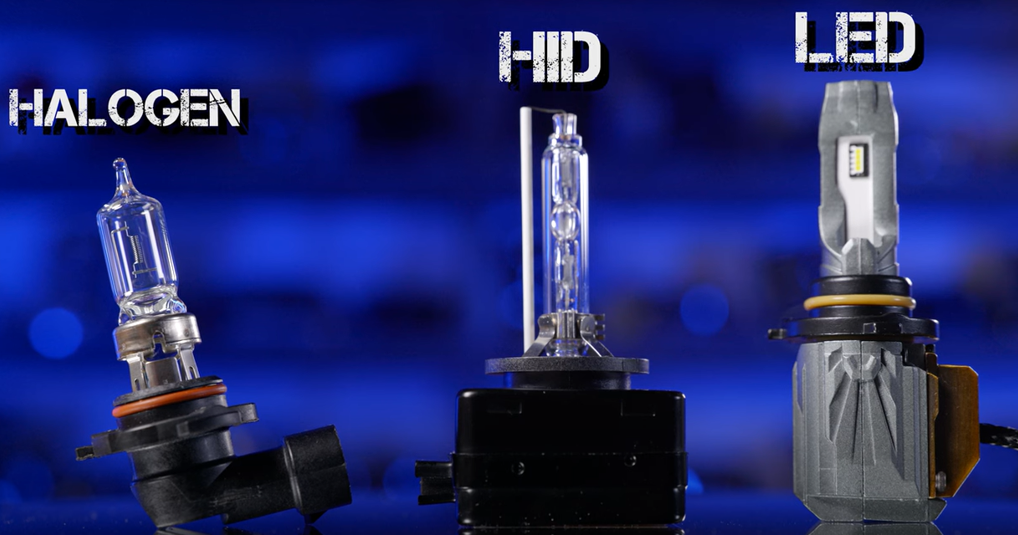Yes, halogen headlights do dim with age due to the gradual degradation of the bulbs and the accumulation of oxidation on the lenses, resulting in reduced light output. This dimming effect can impact visibility and safety while driving, necessitating the replacement of the headlights or the use of restoration methods to improve clarity and brightness.
As vehicles age, the headlights can lose their original brightness due to various factors such as oxidation of the lenses, degradation of the bulbs, and the accumulation of dirt and debris. This reduced light output can compromise visibility, especially during nighttime driving or in adverse weather conditions.
Understanding the causes and potential solutions for dimming headlights is essential for maintaining safe and effective vehicle lighting. Regular maintenance, cleaning, and timely replacement of aging headlights can help ensure optimal visibility and safety on the road.
The Science Of Halogen Headlight Aging
As halogen headlights age, the gas inside the bulb gradually creates a film on the glass, leading to dimming. Oxidation of the lenses can also contribute to the dimming effect, even with new bulbs. Regular cleaning of the lenses is crucial for maintaining brightness. All types of headlight bulbs, including halogen, HID, and LED, undergo a gradual degradation process, causing them to dim over time.
Symptoms Of Aging Headlights
Dimming of halogen headlights is a common issue that occurs with age. There are several symptoms that indicate aging headlights. One of the most noticeable signs is a change in color. Over time, halogen bulbs can shift from a bright white light to a yellow hue. This discoloration is caused by oxidation on the lens, which reduces the amount of light passing through. Even with new bulbs, the headlights may appear dim due to the foggy or cloudy lens.
To identify dimness in halogen bulbs, it is important to regularly clean the lenses with a household glass cleaner. This simple maintenance can significantly improve visibility, especially in areas with harsh weather conditions. It is also recommended to replace the headlights after a few years, as all bulbs dim over time. Additionally, upgrading to newer bulb technologies such as HID or LED can provide brighter and longer-lasting headlights.
Overall, understanding the symptoms and causes of aging headlights can help ensure optimal visibility and safety on the road.
Factors Contributing To Dimming
Halogen headlights can indeed dim with age, and there are several factors that contribute to this phenomenon. One of the main factors is oxidation, which can affect the clarity of the lens. Over time, the lenses can become foggy, cloudy, or yellowed due to oxidation, resulting in reduced light output. Clear lenses allow more light to pass through, whereas oxidized lenses hinder the brightness of the headlights.
Additionally, environmental factors can also impact the longevity of halogen headlights. Exposure to snow, ice, and road salt can further degrade the lenses and decrease their brightness. Regularly cleaning the lenses with a household glass cleaner can help maintain their clarity and improve visibility.
It’s important to note that all types of headlight bulbs, including halogen, HID, and LED, will gradually dim over time. Therefore, it is recommended to replace the bulbs after a few years to ensure optimal brightness and visibility on the road.

Credit: knowhow.napaonline.com
Comparing Bulb Technologies
|
Do Halogen Headlights Dim With Age? Halogen Vs. Hid Vs. Led: Lifespan BattlesThe dimming curve of different bulb technologies varies. Over time, halogen headlights may lose their brightness due to oxidation of the lenses. This oxidation creates a foggy or yellowed appearance, reducing the amount of light that passes through the lenses. Even with brand-new bulbs, the dimming caused by oxidation can make the headlights appear dim. HID (High-Intensity Discharge) bulbs and LED (Light-Emitting Diode) bulbs also experience degradation over time, resulting in a decrease in brightness. However, the rate of degradation may differ between these technologies. Regularly cleaning the lenses with a household glass cleaner can make a significant difference in visibility. Additionally, replacing headlights after a few years is recommended for optimal performance. |
Maintenance Tips To Prolong Brightness
To maintain brightness in halogen headlights as they age, regularly clean lenses and replace bulbs every few years. Oxidation can cause lenses to appear cloudy, reducing light transmission. Keep headlights clear for optimal visibility on the road.
Regular cleaning is a simple yet effective method to maintain the brightness of your halogen headlights. The lenses of the headlights can become oxidized over time, leading to a foggy, cloudy, or yellowed appearance. This shade caused by oxidation does not let as much light pass through as clear lenses, leaving the headlights looking dim even with brand-new bulbs. Therefore, regularly cleaning the lenses with household glass cleaner can make a big difference in how well you can see while driving, especially in areas with snow, ice, or road salt. Additionally, it is important to replace the bulbs timely as all bulbs dim over time and should be replaced after a few years. By following these simple maintenance tips, you can prolong the brightness of your halogen headlights and ensure safe driving.

Credit: www.xenonpro.com
Upgrading Dim Halogen Headlights
As halogen headlights age, they can become dim due to oxidation and buildup on the lenses. Even with new bulbs, a foggy or yellowed appearance can prevent enough light from passing through, leading to decreased brightness. Regular cleaning and upgrading to newer, more efficient bulbs can help improve visibility and safety on the road.
| Dim Halogen Headlights | Halogen headlights may dim due to oxidized lenses, reducing light transmission. |
| Headlight Lifespan | All bulb types, including halogen, degrade over time and require replacement every few years. |
| Dimness Causes | Build-up inside halogen bulbs can lead to reduced brightness and visibility on the road. |
| Restoration Solutions | Regular cleaning and replacing old bulbs can help restore headlight brightness. |
Safety Implications Of Dim Headlights
As halogen headlights age, they can dim due to the oxidation of the lenses, resulting in a foggy or yellowed appearance. This reduced clarity hinders the amount of light passing through, making the headlights appear dim even with new bulbs.
Regular cleaning and maintenance can help improve visibility and ensure safety on the road.
| Dim Halogen headlights may lose brightness due to oxidized lenses. |
| Cloudy, yellowed lenses reduce light transmission, making headlights appear dim. |
| Regular cleaning and timely replacement improve nighttime visibility and safety. |
| Dim headlights pose risks like reduced visibility, potentially leading to accidents. |

Credit: blog.headlightrevolution.com
Navigating Headlight Replacement
Halogen headlights can dim with age due to the oxidation of lenses, resulting in a foggy or yellowed appearance that reduces the amount of light passing through. Even with brand-new bulbs, the dimness caused by oxidation can make headlights appear less bright.
Regularly cleaning the lenses and replacing bulbs every few years can help maintain optimal brightness.
| Halogen headlights may dim with age due to oxidation on the lenses, reducing light transmission. |
| Regularly cleaning the lenses can improve visibility and should be done in snowy or salty areas. |
| Factory halogen bulbs may develop a film inside over time, diminishing brightness. |
| All types of bulbs, including halogen, HID, and LED, will gradually dim as they degrade. |
Frequently Asked Questions
Why Are My Halogen Headlights Dim?
Over time, your halogen headlights can become dim due to oxidation on the lenses. This oxidation creates a foggy or yellowed appearance, which reduces the amount of light passing through the lenses. Even with brand-new bulbs, the dimness will persist.
Regularly cleaning the lenses can help improve visibility.
How Many Years Do Halogen Headlights Last?
Halogen headlights typically last around 450-1,000 hours, which translates to roughly 3-5 years of normal use. However, the brightness may diminish over time due to bulb degradation. Regular cleaning and replacing the bulbs every few years can help maintain optimal performance.
Do Headlight Bulbs Get Dimmer As They Get Older?
Yes, headlight bulbs do get dimmer as they get older. Over time, the bulbs degrade and their light output decreases gradually. Regularly cleaning the lenses can help maintain brightness. It’s recommended to replace headlight bulbs after a few years for optimal visibility and safety.
Why Are My Halogen Headlights Not Bright Enough?
Halogen headlights may appear dim over time due to the oxidation of the lenses, which can cause a cloudy or yellowed appearance. Even with brand new bulbs, the opaque shade caused by oxidation can prevent as much light from passing through.
Additionally, the gas inside the bulbs can create a film on the inside of the glass, further preventing light from escaping. Regularly cleaning your lenses can help improve visibility.
Why Do Halogen Headlights Dim With Age?
Halogen headlights dim with age due to oxidized lenses, hindering light transmission and causing a cloudy appearance.
How Long Do Halogen Headlights Last?
The lifespan of halogen headlights varies, but they typically last for a few years before needing replacement.
Do Headlight Bulbs Get Dimmer As They Get Older?
Yes, headlight bulbs dim over time and should be replaced after a few years. Regular cleaning can also improve visibility.
Conclusion
Halogen headlights do dim with age due to various factors such as oxidation of lenses and buildup of gas inside the bulbs. This dimming effect can be dangerous for drivers, especially in low light conditions. Regularly cleaning the lenses and replacing the bulbs every few years can help improve visibility on the road.
It is important to keep in mind that different types of headlights have different lifespans and degradation patterns.


Leave a Reply